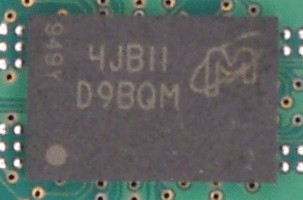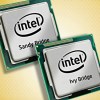 |
||
|
||
| ||
We proceed with a new series of articles devoted to the low level analysis of the most important characteristics of memory modules using our RightMark Memory Analyzer test package. I remind you that the purpose of this analysis is to provide all interested readers with information on compatibility of a given memory module from a given manufacturer with different mainboards based on various chipsets. The object of our next analysis is 256 MB DDR2 Kingmax modules. Manufacturer Information
Module manufacturer: Kingmax Inc. Module AppearancePhoto of the memory module Photo of the memory chip Part Numbering System of Modules and Chips Module Part Number Expansion
Kingmax DDR2 data sheet (http://www.kingmax.com/product/dsdram/ddr2.PDF) does not contain any information on the expansion of several components of a module part number. The documentation provides only brief technical characteristics pertaining to some part numbers. The characteristics of the module under review are provided below.
Chip Part Number Expansion
As we have previously noted,
due to space limitations FBGA-packaged Micron memory chips used in
Kingmax DDR2 modules have an abbreviated part marking that is different
from the part number. You can decode an abbreviated part marking of
any Micron memory chip into a part number at http://www.micron.com/decoder/
SPD module chip data
Description of the SPD general standard:
Description of the SPD specific standard for DDR2:
On the whole, the SPD chip contents of the module under review looks typical. Supported CAS# latencies are 4 and 3. The first value (CL X) corresponds to the memory clock of 3.75 ns, that is to the DDR2-533 mode, the second value (CL X-1) – 5.00 ns, which corresponds to operation in the DDR2-400 mode. Corresponding timings can be considered standard – 4-4-4-12 for the first case and 3-3-3-9 for the second. Among the unusual values one can note the revision number of the SPD chip (00h), which expands into a permissible but non-existent document revision 0.0, as well as a "reserved" value of the module manufacturing date (week code 00h). Testbed Configurations and SoftwareMainboards based on the chipsets of Intel 915 seriesTestbed #1
Testbed #2
Testbed #3
Testbed #4
Testbed #5
Testbed #6
Mainboards based on the chipsets of Intel 925 seriesTestbed #7
Testbed #8
Testbed #9
Testbed #10
Testbed #11
Test ResultsAs we have already written before, we tested memory modules in two modes. The first series of tests (performance tests) were carried out in normal mode, that is with standard timings written in the SPD chip. The second series (stability tests) – in the "extreme" mode with maximum possible timings for a given module on a given mainboard. Mainboards based on the chipsets of Intel 915 seriesPerformance tests
|
| Parameter* | Testbed 1 | Testbed 2 | Testbed 3 | Testbed 4 | Testbed 5 | Testbed 6 |
| Timings |
|
|
|
|
|
|
| Average memory read bandwidth, MB/sec |
|
|
|
|
|
|
| Average memory write bandwidth, MB/sec |
|
|
|
|
|
|
| Max. memory read bandwidth, MB/sec |
|
|
|
|
|
|
| Max. memory write bandwidth, MB/sec |
|
|
|
|
|
|
| Minimum Pseudo-Random Access Latency, ns** |
|
|
|
|
|
|
| Maximum Pseudo-Random Access Latency, ns** |
|
|
|
|
|
|
| Minimum Random Access Latency, ns** |
|
|
|
|
|
|
| Maximum Random Access Latency, ns** |
|
|
|
|
|
|
*the best results are in bold
**Block size – 16 MB
In the first series of tests, MSI 915P Neo2 (Testbed #4) is an absolute leader among mainboards based on Intel 915P/915G, demonstrating its superiority in all parameters. It is actually achieved due to a higher FSB frequency on this mainboard, we already wrote about it. The second place is taken by ASUS P5GDC-V (Testbed #6) based on i915G, which demonstrates some advantage over its competitors in real memory bandwidth. The third place is taken by Intel D915GUX (Testbed #1), Foxconn 915A01-P and 915M03-G (Testbeds #2, 3) and MSI 915G Combo demonstrating almost the same results. It should be noted that you can see here mainboards based on i915P as well as on i915G. That is there is no obvious advantage of the i915P chipset over i915G, which was demonstrated in the DDR2 Micron module tests.
Proceeding to the stability tests, first of all we want to note an interesting peculiarity of DDR2 Kingmax modules, which has something to do with changing timings. We have found out that you can set ANY tRAS values for these memory modules, from 15 to 3(!), without any obvious changes and consequences to the system stability. In all probability, these modules just ignore the value of this parameter specified in the chipset and use their own default value (for example, the value written in the SPD chip – 12). In this connection, we'll provide only the first three timings (tCL-tRCD-tRP) hereafter, which modification directly influences the operation of the memory system.
| Parameter* | Testbed 1 | Testbed 2 | Testbed 3 | Testbed 4 | Testbed 5 | Testbed 6 |
| Timings |
|
|
|
|
|
|
| Average memory read bandwidth, MB/sec |
|
|
|
|
|
|
| Average memory write bandwidth, MB/sec |
|
|
|
|
|
|
| Max. memory read bandwidth, MB/sec |
|
|
|
|
|
|
| Max. memory write bandwidth, MB/sec |
|
|
|
|
|
|
| Minimum Pseudo-Random Access Latency, ns** |
|
|
|
|
|
|
| Maximum Pseudo-Random Access Latency, ns** |
|
|
|
|
|
|
| Minimum Random Access Latency, ns** |
|
|
|
|
|
|
| Maximum Random Access Latency, ns** |
|
|
|
|
|
|
*the best results are in bold
**Block size – 16 MB
Thus, the lowest timing values, which we managed to set on all mainboards in our tests, are 4-4-3. Note that in some cases we managed to set even lower timings – for example, 4-3-3. However, it resulted in memory operation instability (our special stability test quickly detected read/write errors) in all cases. What concerns the "alignment of forces", that is performance characteristics of the memory system in this series of tests, you can easily see that it hasn't changed, at least noticeably. MSI 915P Neo2 is still a leader, the second place is taken by ASUS P5GDC-V, all the other mainboards are sharing the third place.
Among the mainboards based on Intel 925X, the first series of tests again puts forward the product from MSI – MSI 925X Neo mainboard (Testbed #10). The second place, with minimal differences, is taken by Gigabyte 8ANDXP-D (Testbed #7) and ASUS P5AD2 (Testbed #9) mainboards. Foxconn 925A01 (Testbed #11) is almost on the par with them and by some parameters (maximum real memory bandwidth) it even outscores them. The worst results (noticeably lesser real memory bandwidth and noticeably larger memory latency) are demonstrated by Intel D925XCV (Testbed #8).
| Parameter* | Testbed 7 | Testbed 8 | Testbed 9 | Testbed 10 | Testbed 11 |
| Timings |
|
|
|
|
|
| Average memory read bandwidth, MB/sec |
|
|
|
|
|
| Average memory write bandwidth, MB/sec |
|
|
|
|
|
| Max. memory read bandwidth, MB/sec |
|
|
|
|
|
| Max. memory write bandwidth, MB/sec |
|
|
|
|
|
| Minimum Pseudo-Random Access Latency, ns** |
|
|
|
|
|
| Maximum Pseudo-Random Access Latency, ns** |
|
|
|
|
|
| Minimum Random Access Latency, ns** |
|
|
|
|
|
| Maximum Random Access Latency, ns** |
|
|
|
|
|
*the best results are in bold
**Block size – 16 MB
The picture with the minimal timing values, which do not lead to the memory system instability, is the same as with the mainboards based on the i915 series chipsets. Namely, minimal stable timings – 4-4-3; the tRAS value (3..15) specified in configuration registers of the chipset is also ignored here.
| Parameter* | Testbed 7 | Testbed 8 | Testbed 9 | Testbed 10 | Testbed 11 |
| Timings |
|
|
|
|
|
| Average memory read bandwidth, MB/sec |
|
|
|
|
|
| Average memory write bandwidth, MB/sec |
|
|
|
|
|
| Max. memory read bandwidth, MB/sec |
|
|
|
|
|
| Max. memory write bandwidth, MB/sec |
|
|
|
|
|
| Minimum Pseudo-Random Access Latency, ns** |
|
|
|
|
|
| Maximum Pseudo-Random Access Latency, ns** |
|
|
|
|
|
| Minimum Random Access Latency, ns** |
|
|
|
|
|
| Maximum Random Access Latency, ns** |
|
|
|
|
|
*the best results are in bold
**Block size – 16 MB
The second series of tests introduces only the slightest differences into the memory performance rating of the mainboards. The leadership is retained by MSI 925X Neo. However this time the second place is entirely for Gigabyte 8ANDXP-D, which pushes ASUS P5AD2 to the third position together with Foxconn 925A01. No changes in the last place – it is steadily occupied by the Intel D925XCV mainboard.
Our today's tests of Kingmax DDR2 modules prove again that DDR2 memory is better with mainboards based on Intel 925X reaching higher memory bandwidth and lower latencies. MSI 925X Neo, Gigabyte 8ANDXP-D and ASUS P5AD2 are the best models in this mainboard series. The worst mainboard is Intel D925XCV, which demonstrated somewhat worse results than the best models based on chipsets of the Intel 915 series. Concerning this series of mainboards, one can note that these memory modules did not reveal any definite advantage or preference to the chipset type – 915P or 915G, because both representatives, MSI 915P Neo2 and ASUS P5GDC-V, demonstrate quite good results. In conclusion we should say a few words about the operating stability of DDR2 Kingmax modules in the "extreme" mode. It can be considered more or less the same on all tested mainboards, primarily because the modules themselves allow quite mediocre minimal timings in this series of tests.
Write a comment below. No registration needed!
|
Article navigation: |
| blog comments powered by Disqus |
| Most Popular Reviews | More RSS |
 |
Comparing old, cheap solutions from AMD with new, budget offerings from Intel.
February 1, 2013 · Processor Roundups |
 |
Inno3D GeForce GTX 670 iChill, Inno3D GeForce GTX 660 Ti Graphics Cards A couple of mid-range adapters with original cooling systems.
January 30, 2013 · Video cards: NVIDIA GPUs |
 |
Creative Sound Blaster X-Fi Surround 5.1 An external X-Fi solution in tests.
September 9, 2008 · Sound Cards |
 |
The first worthwhile Piledriver CPU.
September 11, 2012 · Processors: AMD |
 |
Consumed Power, Energy Consumption: Ivy Bridge vs. Sandy Bridge Trying out the new method.
September 18, 2012 · Processors: Intel |
| Latest Reviews | More RSS |
 |
Retested all graphics cards with the new drivers.
Oct 18, 2013 · 3Digests
|
 |
Added new benchmarks: BioShock Infinite and Metro: Last Light.
Sep 06, 2013 · 3Digests
|
 |
Added the test results of NVIDIA GeForce GTX 760 and AMD Radeon HD 7730.
Aug 05, 2013 · 3Digests
|
 |
Gainward GeForce GTX 650 Ti BOOST 2GB Golden Sample Graphics Card An excellent hybrid of GeForce GTX 650 Ti and GeForce GTX 660.
Jun 24, 2013 · Video cards: NVIDIA GPUs
|
 |
Added the test results of NVIDIA GeForce GTX 770/780.
Jun 03, 2013 · 3Digests
|
| Latest News | More RSS |
Platform · Video · Multimedia · Mobile · Other || About us & Privacy policy · Twitter · Facebook
Copyright © Byrds Research & Publishing, Ltd., 1997–2011. All rights reserved.